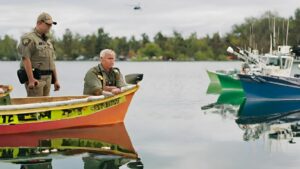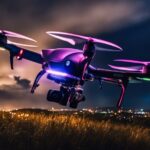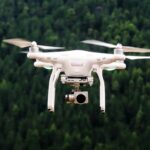In response to the increasing concerns surrounding, Is drone fishing legal in Hawaii. The governor has taken decisive action to regulate and control this practice. On June 27, 2022, Gov. Ige promptly ratified a law that had been approved by the State Legislature in 2022 prohibiting fishing through drone technology.
This article examines the measures implemented by the state to address the safety and environmental issues associated with drone fishing. Act 207 (SB2065)
By shedding light on the governor’s actions and the rationale behind them, this article aims to provide a comprehensive understanding of the current state of drone fishing regulation and its implications for the future of our aquatic ecosystems.
Key Takeaways: Is Drone Fishing Legal In Hawaii
- The Division of Aquatic Resources (DAR) is responsible for managing and conserving Hawaii’s aquatic resources.
- DAR implements policies and regulations for the sustainable use and protection of marine and freshwater ecosystems.
- DAR collaborates with communities, stakeholders, and government agencies to promote responsible fishing practices.
- DAR produces annual reports summarizing the state of Hawaii’s aquatic resources and fisheries, providing data on fish populations, catch statistics, fishing trends, and changes to fishing regulations and management strategies.
The Use of Drones in Fishing: A Growing Concern
With the increasing popularity of recreational drone use and the rising concerns surrounding its impact on fishing practices, the use of drones in fishing has become a topic of growing concern among fisheries management agencies and stakeholders.
The potential economic impact of using drones in fishing is a key consideration. Drones have the ability to provide valuable data on fish populations, habitat conditions, and fishing activities, which can aid in the development of more efficient and sustainable fishing practices. Additionally, drones can be used to monitor compliance with fishing regulations, reducing the need for costly and time-consuming enforcement efforts.
However, the use of drones in fishing also raises ethical implications. Some argue that it disrupts the traditional fishing experience and may give an unfair advantage to those who can afford drone technology. Additionally, concerns have been raised regarding the potential for drones to disturb wildlife and damage sensitive habitats.
A balanced approach is needed to address these concerns while harnessing the potential benefits of drone technology in fishing.
Current Regulations on Drone Fishing

To ensure the responsible and safe use of drones in fishing, it is imperative that current regulations on drone fishing are established and enforced. The impact of drone fishing on fish populations necessitates the need for proper regulations to protect the aquatic ecosystem.
These regulations should include:
- Limiting the use of drones for fishing purposes to designated areas and times to prevent overfishing and disturbance of fish habitats.
- Implementing size and weight restrictions on drones used for fishing to minimize the risk of injury to fish and other aquatic species.
- Requiring anglers to obtain a special license or permit for drone fishing to ensure they are knowledgeable about the rules and regulations governing this activity.
- Mandating the use of non-barbed hooks when fishing with drones to minimize harm to fish and facilitate catch and release practices.
- Enforcing strict penalties for violations of drone fishing regulations to deter irresponsible and illegal practices that could harm fish populations and the environment.
Governor’s Action Plan to Address Drone Fishing
Furthermore, the governor has devised a three-point action plan to effectively address the issue of drone fishing and protect the state’s aquatic resources.
Recognizing the potential impact on fish populations, the governor’s response aims to address the growing concern of drone fishing in a comprehensive and proactive manner.
The first point of the action plan involves implementing stricter regulations and penalties for individuals caught engaging in drone fishing activities. This will serve as a deterrent to those who may consider using drones for illegal fishing practices.
The second point focuses on increasing surveillance and enforcement efforts to identify and apprehend drone fishing operators. This will involve collaborating with law enforcement agencies and utilizing advanced technology to monitor and track drone activity in fishing areas.
The final point of the action plan emphasizes the importance of public education and awareness campaigns to educate the fishing community about the environmental and ethical implications of drone fishing. By raising awareness, the governor hopes to foster a culture of responsible fishing practices and encourage individuals to report any instances of drone fishing.
Through these measures, the governor aims to safeguard the state’s aquatic resources and ensure the long-term sustainability of fish populations.
Implications of Drone Fishing on Aquatic Resources
The use of drones for fishing activities poses significant risks to the conservation and management of aquatic resources in Hawaii.
- Drones have the potential to disrupt fish habitats and disturb spawning grounds, leading to a decline in fish populations and biodiversity.
- Unregulated drone fishing can result in overfishing, as drones enable anglers to reach previously inaccessible areas and catch larger quantities of fish.
- The economic impact of drone fishing on local communities could be negative, as it may lead to the depletion of fish stocks, affecting tourism and recreational fishing industries.
- Technological advancements in drone fishing may outpace regulatory measures, making it challenging for authorities to enforce fishing regulations effectively.
- Effective management strategies and regulations need to be implemented to mitigate the environmental and economic consequences of drone fishing and protect Hawaii’s aquatic resources for future generations.
Environmental and Safety Concerns of Drone Fishing
Environmental concerns, as well as safety considerations, are paramount when discussing the impact of drone fishing on aquatic ecosystems.
The growing popularity of drone fishing has raised concerns about its potential environmental impact. One of the main concerns is the disturbance caused to marine life by the presence of drones. The noise and sudden movements of the drones can disrupt the natural behavior of fish and other aquatic species, affecting their feeding and breeding patterns.
Additionally, there is a risk of entanglement or injury to marine life if the fishing line gets snagged or if the drone crashes into the water.
To address these concerns, drone fishing regulations are being implemented in various regions. These regulations aim to mitigate the environmental impact of drone fishing and ensure the safety of both marine life and recreational anglers.
Collaborative Efforts to Combat Drone Fishing
To address the growing concerns surrounding drone fishing, multiple stakeholders in the fishing industry are joining forces to combat this practice and preserve the integrity of aquatic ecosystems. Collaborative efforts between public and private entities are being made to tackle the challenges posed by drone fishing. These efforts aim to leverage technological advancements and expertise to develop effective solutions.
Some of the initiatives being undertaken include:
- Forming public-private partnerships to enhance surveillance and enforcement capabilities.
- Investing in research and development to create drone detection and interception technologies.
- Implementing stricter regulations and penalties for illegal drone fishing activities.
- Conducting educational campaigns to raise awareness about the negative impacts of drone fishing.
- Promoting responsible fishing practices and sustainable resource management through community outreach programs.
Through these collective endeavors, it is hoped that the harmful effects of drone fishing can be mitigated, safeguarding the well-being of aquatic ecosystems.
Enforcement Measures to Crack Down on Drone Fishing
Law enforcement agencies are implementing stringent measures to crack down on the practice of drone fishing and ensure compliance with regulations.
To effectively enforce the laws, authorities are employing a range of enforcement strategies and leveraging technological advancements. One key strategy is increased surveillance and monitoring of fishing activities using drones equipped with high-resolution cameras. These drones are deployed to identify and track individuals engaged in illegal drone fishing activities.
Additionally, authorities are using advanced GPS tracking systems to locate and apprehend offenders. Technological advancements have also facilitated the development of software that can detect and identify drones being used for fishing purposes. This software enables authorities to quickly identify and respond to illegal drone fishing activities.
Public Opinion and Stakeholder Perspectives on Drone Fishing
Amidst the crackdown on drone fishing, there is a need to examine the public opinion and stakeholder perspectives regarding this controversial practice.
The public perception of drone fishing varies, with some viewing it as an innovative and exciting way to fish, while others see it as unethical and detrimental to the environment.
Stakeholders, including fishing industry representatives and environmental advocates, also have differing views on drone fishing.
The economic impact of drone fishing is another important consideration, as it can potentially disrupt traditional fishing methods and affect the livelihoods of fishermen.
Furthermore, the use of drones in fishing raises concerns about the potential for overfishing and damage to marine ecosystems.
Understanding these perspectives is crucial in shaping future policies and regulations surrounding drone fishing.
Future Outlook: Balancing Innovation and Conservation in Fishing Practices
How can society strike a balance between promoting innovation in fishing practices and ensuring the conservation of aquatic resources?
As technological advancements continue to shape the fishing industry, it is essential to consider the future regulations that will govern these practices. The use of drones in fishing, for example, has raised concerns about its potential impact on fish populations and ecosystems.
To achieve a sustainable future, it is crucial for policymakers to develop regulations that address these concerns while still allowing for innovation and technological advancements. These regulations should focus on promoting responsible and ethical fishing practices, minimizing bycatch and habitat destruction, and ensuring the long-term health and resilience of aquatic resources.
Conclusion
In conclusion, The governor has taken decisive action to regulate and control drone fishing activities in response to growing safety and environmental concerns.
The implementation of stricter regulations aims to protect our aquatic resources and ensure sustainable fishing practices.
Through collaborative efforts between government agencies, stakeholders, and the public, the governor’s actions seek to strike a balance between innovation and conservation in fishing practices.
These efforts highlight the importance of proactive measures in addressing emerging challenges and safeguarding our aquatic ecosystems.






